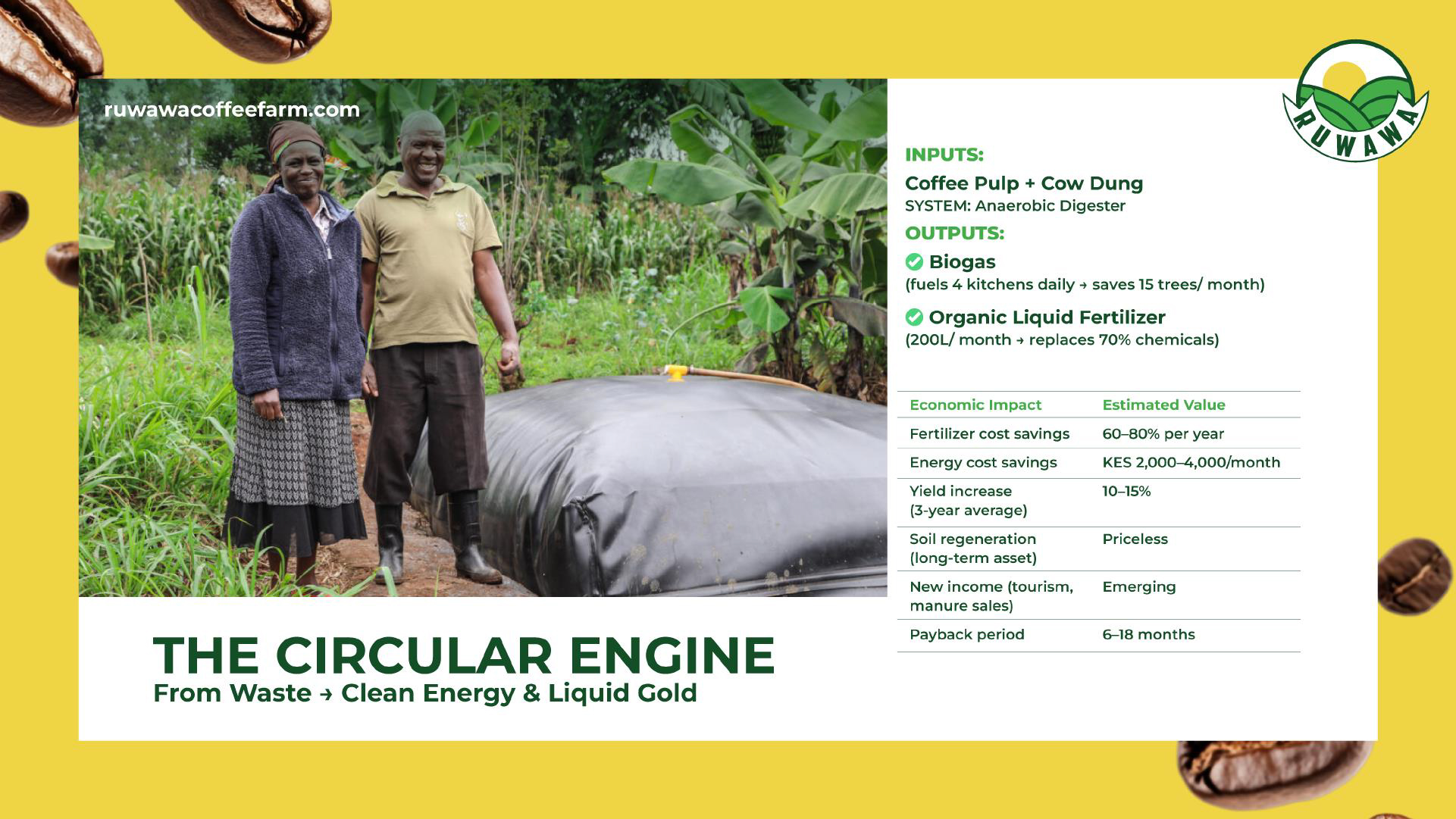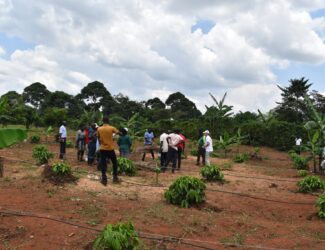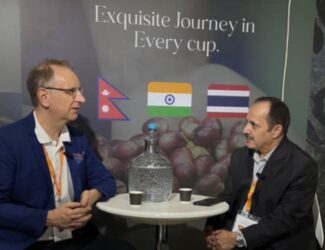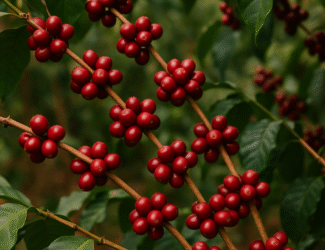
David Waweru of Kenya Shares Regenerative Farming Experience at Circular Coffee Economy Meeting
Dubai – August 2, 2025 (Qahwa World) – Kenyan farmer David Lenny Waweru, owner of Ruwawa Farm, shared his practical experience in regenerative agriculture during the 21st session of the Working Group on Circular Economy in Coffee, organized by the Center for Circular Economy in Coffee (C4CEC) in coordination with the Coffee Guide Network and the International Trade Centre (ITC).
Waweru’s presentation was part of a broader discussion focused entirely on regenerative agriculture. He participated as one of the farmers involved in the Kenya Circular Coffee Pilot Project, which aims to restore soil fertility through simple, low-cost agricultural practices adapted to smallholder farmers.
In his remarks, Waweru explained how his journey toward regenerative farming began after years of facing soil degradation, declining yields, and erratic rainfall. Through the pilot project, he implemented several practices, including using coffee husks as organic mulch to retain soil moisture and reduce weed growth, composting coffee and farm waste to improve organic content and biological activity in the soil, planting cover crops to fix nitrogen and prevent erosion, constructing small rainwater harvesting pits and basic terraces to allow water infiltration rather than runoff, and integrating trees within the coffee plots to enhance shade and biodiversity.
He noted that these practices started showing results within a single farming season. “The smell of the soil changed,” he said. “Life returned — from earthworms to deeper color and increased fertility.”
In addition to the direct impact on his land, Waweru spoke about the change he began observing among neighboring farmers. Many started visiting his farm, asking questions, and gradually adopting some of the same techniques. “When they saw I wasn’t using chemical fertilizers but still had strong, healthy trees, they got curious,” he said. “Now we’re exchanging compost recipes.”
He emphasized the importance of collaborative learning among farmers, seeing knowledge sharing as a key enabler for spreading regenerative practices without needing large-scale external interventions.
Despite the progress, Waweru acknowledged several ongoing challenges, particularly the need for more manual labor to carry out these practices, and the lack of clear market incentives for farmers who apply regenerative methods.
Nonetheless, he stressed that his vision is guided by long-term thinking. “If I care for the land today, it will feed us and our children for decades. But if we deplete it, we’ll only take what we have now — and lose the future.”
He also expressed his ambition to expand his work by engaging local youth, documenting practices digitally, and collaborating with broader farming networks to share the experience.
Waweru’s contribution offered a compelling example of how smallholder farmers can lead sustainable transitions from the ground up, using knowledge, creativity, and community support. His story was one of several real-world case studies shared during the July session, alongside experiences from Brazil and other coffee-producing regions.



